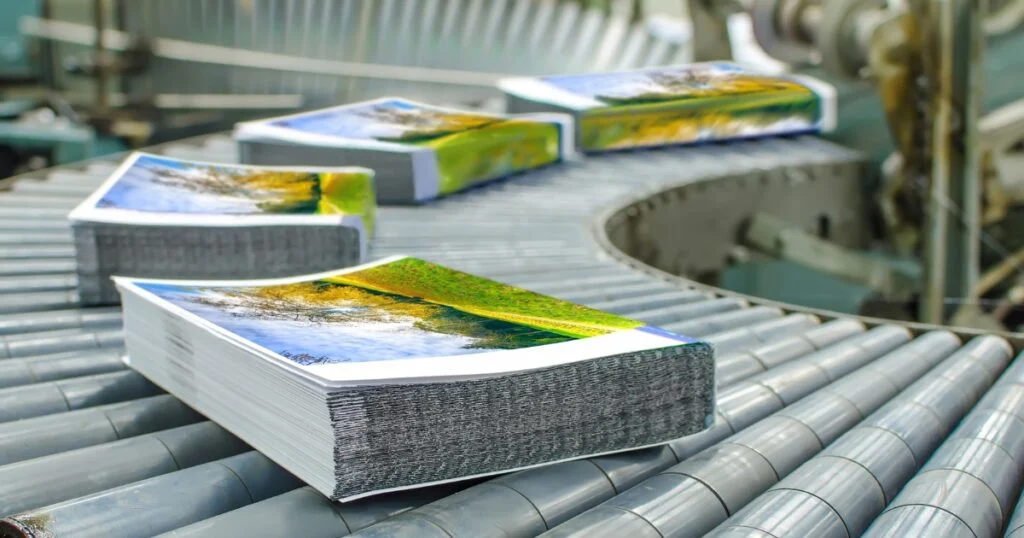The Environmental Impact of Printing and How to Reduce It
Printing is a vital aspect of our daily lives, whether for work, education, or personal use. However, it comes with its own set of environmental challenges. From the energy consumed by printers to the paper waste generated, the printing process can contribute significantly to our ecological footprint. But with growing awareness of sustainability, there are plenty of ways to reduce the negative environmental impact of printing. In this guide, we’ll explore the various environmental concerns related to printing and offer practical tips on how to mitigate them.
The Environmental Footprint of Printing
While modern printing technology has evolved, many aspects of printing still pose a threat to the environment. Here’s a closer look at some of the most pressing environmental issues:
1. Paper Waste
Paper is one of the most commonly used materials in printing. Unfortunately, paper waste is a significant contributor to deforestation and landfills. The production of paper also requires large amounts of water and energy, which increases the carbon footprint of printed materials.
2. Energy Consumption
Printers, especially large commercial ones, consume substantial amounts of energy. The electricity used to power printers contributes to the overall demand for fossil fuels, which can increase greenhouse gas emissions. Additionally, leaving printers on standby mode or using older, inefficient models can result in higher energy consumption.
3. Toxicity of Ink and Toner Cartridges
Many traditional inks and toners contain harmful chemicals such as volatile organic compounds (VOCs) that can contribute to air pollution and pose health risks. These chemicals can also leach into the environment if not disposed of properly.
4. Carbon Emissions
The entire lifecycle of printing, from paper production to transportation and disposal, contributes to carbon emissions. Printing activities in offices and homes, especially on a large scale, can increase overall carbon footprints.
How to Reduce the Environmental Impact of Printing
Despite these concerns, there are plenty of steps individuals and businesses can take to minimize the environmental effects of printing. Here are some practical strategies to reduce your printing footprint:

1. Print Only When Necessary
One of the simplest ways to reduce the environmental impact of printing is by printing less. Before hitting the print button, consider if it’s truly necessary to print the document. Embrace digital solutions for notes, documents, and communications whenever possible.
- Go paperless: Use digital files for sharing documents, notes, and reports.
- Preview before printing: Always use the “Print Preview” option to ensure that you’re not wasting paper on unnecessary pages.
2. Use Double-Sided Printing
If you need to print documents, make use of double-sided printing, or duplex printing, to reduce paper consumption by up to 50%. Many modern printers offer this feature, allowing you to automatically print on both sides of the paper.
- Set default to duplex printing in printer settings to make it the norm for all documents.
3. Choose Eco-Friendly Paper
Switch to recycled paper or paper made from sustainable sources. Recycled paper requires less energy and water to produce compared to virgin paper, and it helps to reduce the overall demand for wood.
- Look for FSC-certified paper: The Forest Stewardship Council (FSC) certifies paper products that come from responsibly managed forests.
- Opt for unbleached paper: Bleaching paper requires chemicals and water, which can harm the environment.
4. Recycle Ink and Toner Cartridges
Instead of throwing away used ink and toner cartridges, consider recycling or refilling them. Many printer manufacturers and retailers offer recycling programs where you can return empty cartridges to be refurbished and reused.
- Use refilled cartridges: Opt for remanufactured or refillable toner and ink cartridges to reduce waste.
- Find local cartridge recycling centers: Many stores accept empty cartridges for proper recycling.
5. Choose Energy-Efficient Printers
Upgrade to printers with energy-saving features. Look for Energy Star-certified models that consume less electricity without compromising performance. Energy-efficient printers can significantly reduce both your energy consumption and your carbon footprint.
- Turn off printers when not in use: Avoid leaving printers on standby mode. Shut them down when they’re not actively being used.
- Use printers with automatic shutoff: Some printers automatically power off when they’ve been idle for a set period.
6. Minimize the Use of Color Printing
Color printing uses more ink than black-and-white printing, and the inks themselves often have a greater environmental impact. Limit color printing to documents that absolutely require it.
- Print in black and white unless color is necessary, particularly for internal documents or drafts.
7. Maintain Your Printer Regularly
A well-maintained printer works more efficiently and uses less energy. Regularly clean your printer, replace old parts, and keep it free from dust and paper jams to avoid unnecessary power consumption and waste.
- Follow the manufacturer’s instructions for maintenance to keep your printer in optimal condition.
8. Reduce the Size of Printouts
If possible, reduce the size of documents to minimize the amount of paper used. Many word processors and PDF readers allow you to adjust the margins, font size, and layout to fit more content onto fewer pages.
- Use smaller fonts or reduced margins to fit more text on one page.
9. Implement Print Management Solutions
For businesses, implementing print management software can help control and reduce unnecessary printing. These systems track printing habits, help with printer allocation, and allow you to monitor paper and ink usage.
- Set print limits to control how much is printed.
- Use secure print features to ensure that only authorized users can print sensitive documents.
Conclusion
While printing is an essential part of modern life, it’s important to recognize the environmental impact it can have and take steps to mitigate it. By reducing paper waste, choosing eco-friendly materials, using energy-efficient printers, and recycling ink cartridges, you can significantly reduce your printing-related carbon footprint. Small changes in how we approach printing can make a big difference in protecting the environment for future generations.
Implementing sustainable printing practices not only benefits the planet but can also reduce operational costs for businesses and foster a more eco-conscious society. By making thoughtful, eco-friendly decisions in your printing habits, you can do your part to protect the environment while still enjoying the benefits of modern printing technology.


